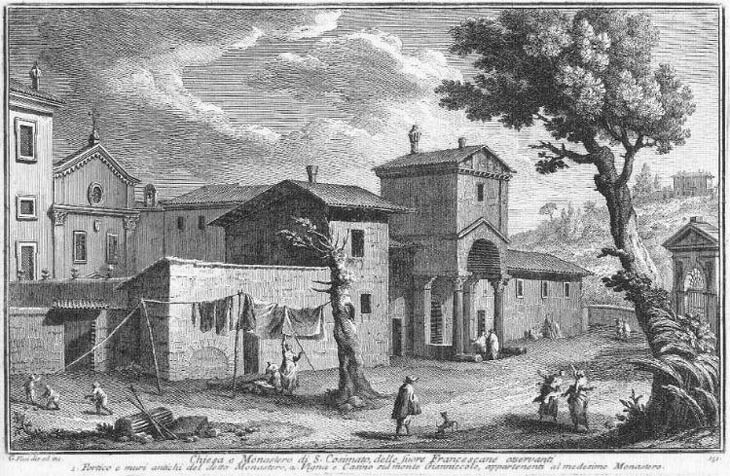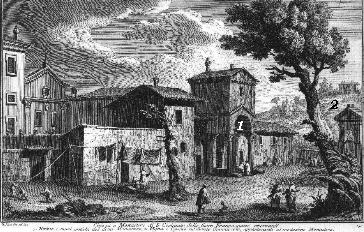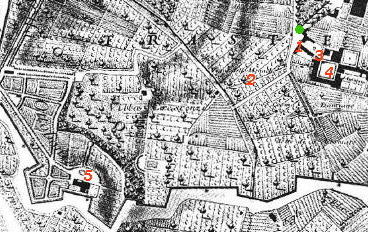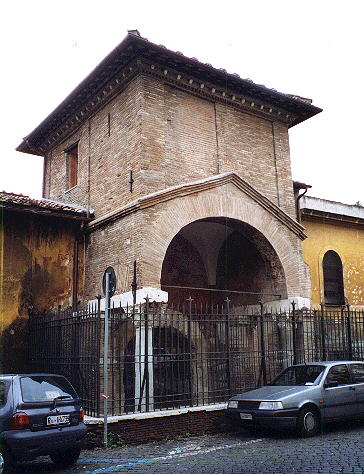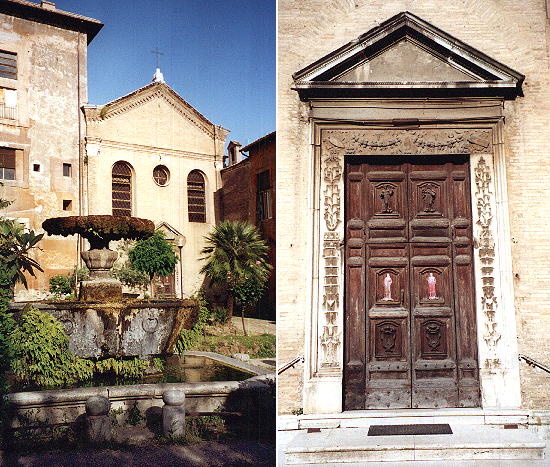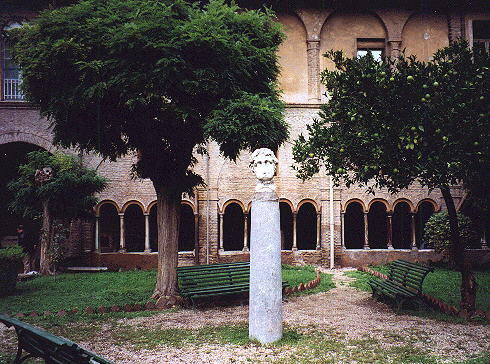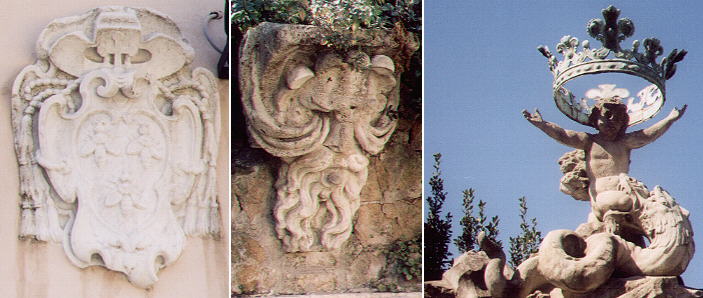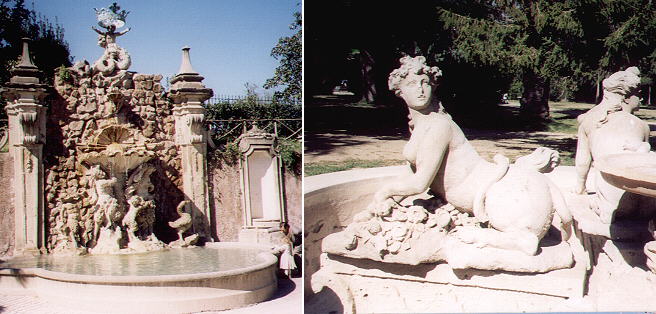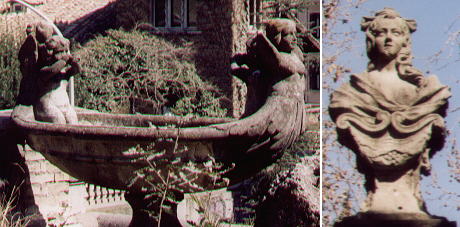  Chiesa e Monastero di San Cosimato (Book 8) (Map C3) (Day 6) (View D11) (Rione Trastevere) In this page:
The Monastery of S. Cosimato (also known as S. Cosmo e Damiano) was
inside the walls, but in an area of Trastevere which was mainly occupied
by vineyards belonging to the monastery. The porch is very similar to
the porches of S.
Clemente and S.
Maria in Cosmedin The view is taken from the green dot in the 1748 map below.
In the description below the plate Vasi made reference to: 1) Entrance and ancient walls; 2) Vigna (farm) belonging to the monastery.
The small map shows also 3) Chapel of S. Cosimato; 4) Main cloister; 5) Villa Sciarra.
Piazza S. Cosimato is today known more for its market and its many restaurants than for the Monastery. The old entrance is today at a lower level and it is almost unnoticed.
The little chapel inside the Monastery (today a hospital) has a very nicely decorated entrance.
The cloister (built at the time of Sixtus IV as you see from the coat of arms in my background) has retained its peaceful atmosphere. Urbanus VIII protected with new walls the Janiculum and in 1653, his nephew Cardinal Antonio Barberini bought
most of the land next to the walls between Porta Portese and
Porta S. Pancrazio to build a summer residence. At the time of the small map (1748) the area
belonged to the Ottoboni, but it was bought again by the Barberini. With the extinction of the Barberini family and after
endless legal battles, in 1811 the property was acquired by the Colonna di Sciarra, who gave the Villa its current name. In 1886
the estate was split and a large part of it became a residential area. Thank goodness an American couple George Wurts and
Henriette Tower bought the part of the estate closest to the walls and restored it (the area had been largely damaged in 1849
during the fights between the French troops and the supporters of the Roman Republic). George Wurts
brought here the fountains and the statues which decorated an XVIIIth century villa near Milan. In 1928 Mrs Wurts donated in her will
the Villa to the City of Rome, but she did this through a personal donation to Benito Mussolini, whose name (after World War II) was erased
from the inscription celebrating the donation.
The images above summarize the history of Villa Sciarra: (left to right): a coat of arms of Cardinal Barberini; a relief which can also be seen above the entrance of Palazzo Colonna di Sciarra; the symbol of the Visconti family (and one of the symbols of Milan).
The subjects and the style of the fountains and statues of Villa Sciarra are quite different from those which typically decorate the other Villas of Rome.
Excerpts from Giuseppe Vasi 1761 Itinerary related to this page:
Next plate in Book 8: Monastero di S. Lorenzo in Panisperna
Go
to |
All images © 1999 - 2003 by Roberto Piperno. Write to romapip@quipo.it
